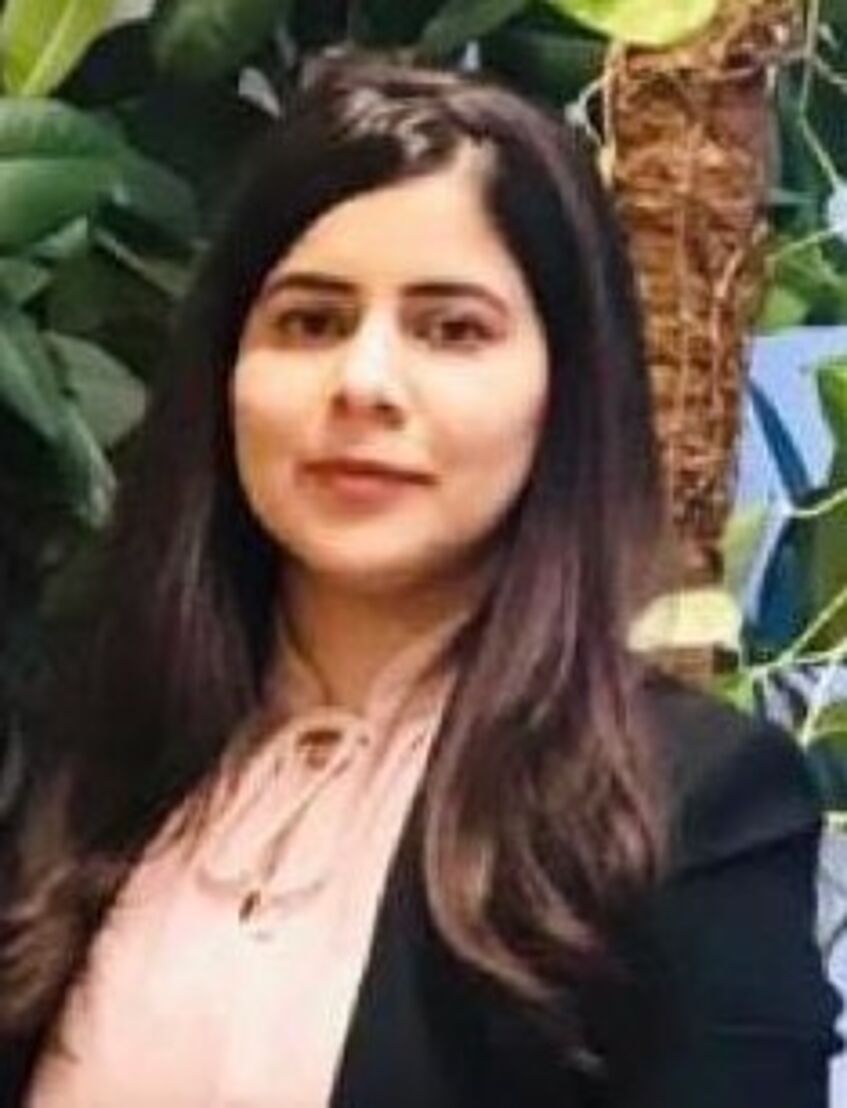Dr. Mehwish BIBI, BSc. MSc. MPhil.
Raumnummer: 2B484B
Tel.: +43-1-4277-53621

Main Fields of Research:
- Anthropocene Markers (Trace metals, Micro Plastics, Radionuclides) in Lacustrine and Flood Plain sediments
- Geochemistry and Ecotoxicology
- Paleoclimates and Climate Change
Education:
2019: Doctor of Philosophy (PhD)
2014: Master of Philosophy (M.Phil)
2011: Master of Science (M.Sc)
Academic Experience:
2022-Ongoing: Post-Doc Researcher, Department of Geology, University of Vienna, Austria
2020-2021: Visiting faculty at Department of Environmental Sciences, QAU, Islamabad, Pakistan
2021-2026: Co-PI, UNESCO IGCP 732 - LANGUAGE of the Anthropocene
Current Projects:
- UNESCO IGCP 732 - LANGUAGE of the Anthropocene
- ÖAW-Austrian Academy of Sciences Research Program, IGCP 732 - LANGUAGE of the Anthropocene
Publications:
Articles
2021 Iqbal, S., Wagreich, M., Bibi, M., Jan, I. U., and Gier, S. Multi-Proxy Provenance Analyses of the Kingriali and Datta Formations (Triassic–Jurassic Transition): Evidence for Westward Extension of the Neo-Tethys Passive Margin from the Salt Range (Pakistan). Minerals, 11(6), 573.
https://doi.org/10.3390/min11060573
2020 Bibi, M., Wagreich, M., and Iqbal, S. (2020). Trace metals as markers for historical anthropogenic contamination: Evidence from the Peshawar Basin, Pakistan. Science of The Total Environment, 703, 134926.
https://doi.org/10.1016/j.scitotenv.2019.134926
2020 Bibi, M., Wagreich, M., Iqbal, S., Gier, S., and Jan, I. U. Sedimentation and glaciations during the Pleistocene: Palaeoclimate reconstruction in the Peshawar Basin, Pakistan. Geological Journal,
https://doi.org/10.1002/gj.3445
2019 Bibi, M., Wagreich, M., Iqbal, S., and Jan, I. U. Regional sediment sources versus the Indus River system: The Plio-Pleistocene of the Peshawar Basin (NW-Pakistan). Sedimentary Geology, 389,26-41.
https://doi.org/10.1016/j.sedgeo.2019.05.010
2019 Iqbal, S., Wagreich, M., Kuerschner, W. M., Gier, S., and Bibi, M. Hot-house climate during the Triassic/Jurassic transition: The evidence of climate change from the southern hemisphere (Salt Range, Pakistan). Global and planetary change, 172, 15-32
https://doi.org/10.1016/j.gloplacha.2018.09.008
2016 Bibi. M, Hashmi. M. Z, and Malik. R.N. The level and distribution of heavy metals and changes in oxidative stress indices in humans from Lahore district, Pakistan. Human & Experimental Toxicology, 35(1), 78-90.
https://doi.org/10.1177%2F0960327115578063
2015 Bibi. M, Hashmi. M.Z, and Malik. R.N. Human exposure to arsenic in groundwater from Lahore district, Pakistan. Environmental Toxicology and Pharmacology, 39. 42–52.
https://doi.org/10.1016/j.etap.2014.10.020
2015 Iqbal. S, Jan. I.U, Akhther. M.G and Bibi. M. Palaeoenvironmental and sequence stratigraphic analyses of the Jurassic Datta Formation, Salt Range, Pakistan. Journal of Earth System Science, 124(4) 747- 766.
https://doi.org/10.1007/s12040-015-0572-y
Abstracts:
2022 Bibi, M., Iqbal, S., and Wagreich, M., Climate change, monsoon variability and anthropogenic controls on floods in Pakistan, 2nd workshop of IGCP-732, Nairobi's Anthropocene IGCP 732 meeting, Nairobi, Kenya.
2021 Iqbal, S., and Bibi, M., Climate change and monsoon variability: Anthropogenic role in Floods in Pakistan, 1st workshop of IGCP-732, Vienna, Austria.
2021 Bibi, M., Iqbal, S., and Wagreich, M., Significance of archaeological sites as markers for historical anthropogenic contamination: Evidence from the Peshawar, Pakistan. 1st workshop of IGCP-732, Vienna, Austria.
2021 Bibi, M., Iqbal, S., and Wagreich, M., Precious and trace metals as markers for historical anthropogenic contamination: Evidence from the Peshawar Basin, Pakistan, AGU, USA.
2019 Bibi, M., and Wagreich, M. Precious metals and the early Anthropocene: Evidences from the Peshawar Basin, Pakistan. In Geophysical Research Abstracts (Vol. 21). EGU-P1
2017 Bibi, M., Wagreich, M., and Iqbal, S. Palaeoenvironmental analyses of the Pleistocene and Holocene deposits of the Peshawar Basin, Pakistan – in search for the early Anthropocene. Abstracts 10th International Symposium on the Cretaceous, August 21 - 26, 2017, Vienna, Austria, p. 35.
